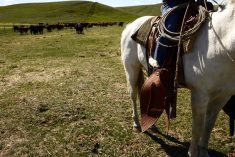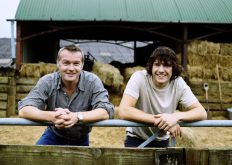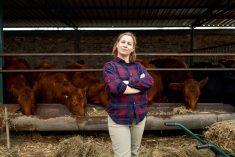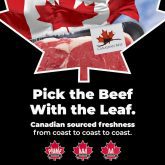A North American view of the meat industry. Steve Kay is publisher and editor of Cattle Buyers Weekly
Declining cattle numbers is the most serious structural issue facing the North American industry. Without sufficient cattle, feedlots and packing plants cannot operate efficiently
The U.S. cattle industry is getting smaller and will do so again in 2010. That’s because cattle numbers in North America have been declining for several years. The past two years alone saw nearly five million cattle disappear from the U.S., Canadian and Mexican herds. This has put more pressure on the packing and cattle feeding sectors in both the U.S. and Canada. Yet there are no signs the decline has halted and no signs of herd rebuilding. Even if this begins to occur this year, increased numbers won’t start to show up at feedlots and slaughter plants until 2013 at the earliest.
Read Also

A strategic approach to risk on the ranch
Given the increase in the value of livestock and the market volatility, we need to cover our risks. First,…
This makes it even more crucial that beef demand in the U.S. improves this year from last. An improvement will boost wholesale beef and cattle prices, and help cattle feeding and packing margins. But the declining cattle population means that more feedlots will close. Fed beef processors will need to manage their margins as they did in 2009. The greater pressure might be on cow processors. U.S. cow slaughter this year will likely decline 600,000 head from last year. American cow-calf producers are likely to see average returns improve moderately from the past two loss years. But much will depend on live cattle and grain prices. These two factors will determine cattle feeders’ ability to pay higher prices for replacement cattle.
Declining cattle numbers is the most serious structural issue facing the North American industry. Without sufficient cattle, feedlots and packing plants cannot operate efficiently. U.S. numbers alone have declined nearly three million head in the past two years, from just over 96 million on Jan. 1, 2008 to an expected 93.0 million on Jan. 1 this year. This decline is the throughput of two of the largest beef-processing plants or the annual marketings of the four largest cattle-feeding operations.
The feeding industry already has 30 per cent over capacity. There are dozens of feedlots that are empty as their owners attempt to sell them. The most vulnerable are those with 5,000 to 15,000 head of pen space. They don’t have the size to spread costs over enough cattle. The packing industry has about seven per cent over capacity so plants are unlikely to close. Packers though will increasingly run their plants only five days. They will continue to reduce their Saturday kills. These kills in 2009, excluding holiday weeks, averaged 20,540 head. This was 16 per cent of a normal weekday kill.
Rebuilding beef demand after its historic decline in 2009 is the biggest challenge facing the industry this year. Overall demand fell 10 per cent from 2008, returning it to its 1998 level. But the industry will be limited in its ability to improve demand unless the economy picks up and more Americans go back to work. Improvement in foodservice demand will be vital. Upper-and mid-tier restaurants suffered most in 2009 as consumers ate out less. They transferred a significant percentage of their food dollars from foodservice to retail. They also traded down in their protein purchases in the grocery store. All this hurt the wholesale price of middle meats. Any improvement in the restaurant business will be positive. But the industry must focus on adding value to the lower-priced end meats and other items from the carcass. In this regard, the value of byproducts will be an important factor in determining the price of live cattle. The decline in these values in 2009 accounted for a $2.80 per cwt decline in fed steer prices, says analyst Jim Robb of the Livestock Marketing Information Center. The bottom line is, the North American industry will need to do more with less in 2010.
Cattle Buyers Weekly covers the North American meat and livestock industry. For subscription information, contact Steve Kay at P.O. Box 2533, Petaluma, CA 94953, or at 707-765-1725, or go to www.cattlebuyersweekly.com.















